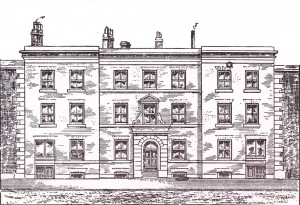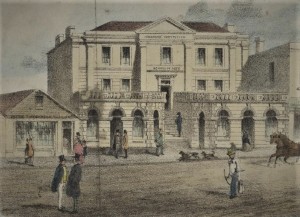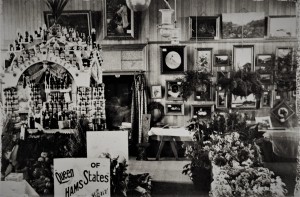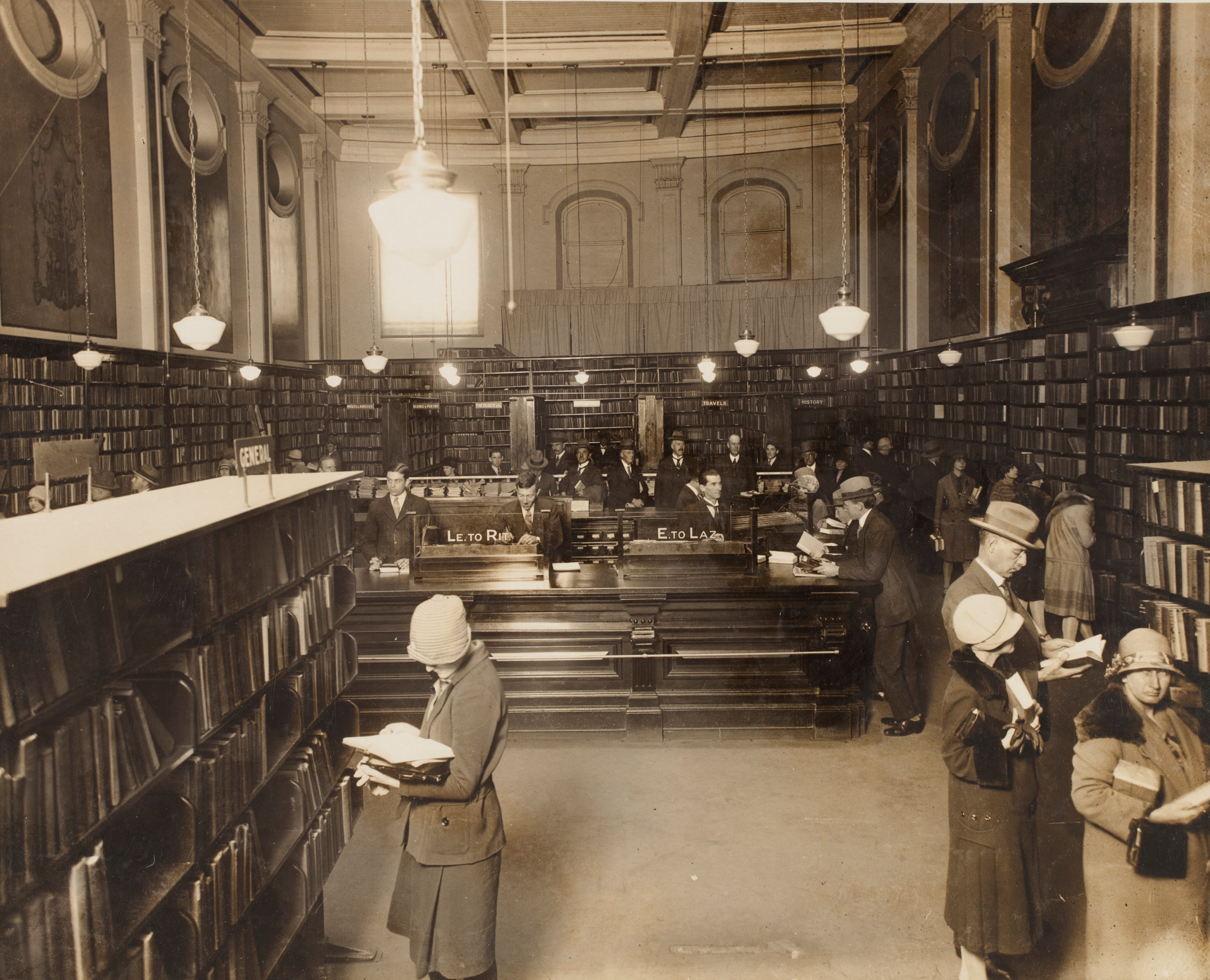In Australia’s colonial period, before there were universities, technical and agricultural colleges, and when post-elementary schooling was uncommon, there were few institutions that were able to disseminate advanced or “useful knowledge”. This was a period in which more scientific approaches to agricultural, mining and later, industrial production, were increasingly advocated. Spreading the new knowledge, was haphazard, often dependent on what recent immigrants, newspapers, periodicals and books arriving from Britain had to contribute.
The Australian colonies formed part of a British Empire-wide economy, and the goods produced for trade, whether wool, wheat, copper, whale oil or others, were subject to competition from elsewhere. The use of new knowledge about improving wheat strains, or animal breeding, or engineering and transport could be profitable. The nineteenth century was also a period in which medical knowledge began to improve, and scientific approaches to infection control and much more, could prolong lives.
At the same time, the emergence of modern industrial capitalism, especially in England and Scotland, with its production of modern industrial workers, led to potential labour and social instability. There was a need to educate workers for the new demands placed upon them in the emerging economy, but parallel to this was the rise of trade unions and worker-based political movements. The demand for better educated workers arose not only from outside the working class, but also from within. There were also the intentions of liberally inclined members of the governing classes and emerging cultural elites. A member of this group assumed the governorship of New South Wales in 1831. Richard Bourke advocated for educational improvement as a necessity in the new colony. He encouraged the mechanics’ institute movement.
An allied reason for the creation of new institutions to meet educational need, and perhaps dominant in some areas in the colonies, was a desire by those, already well educated, or seeking self-improvement, to engage more satisfactorily with British and European scientific and higher culture. Thinking about and reading Shakespeare, English poetry, philosophy as well as science, to participate in debates over the questions of the day: social, political, economic, international relations and more, met the need of a small but growing section of the population in towns and emerging cities.
And then there were those who simply wished to read, whether imported novels and other literature, or local and British journals and newspapers. The expense of such reading could be defrayed by collective subscription. Wealthier citizens, even colonial governments, might be tempted to patronise and support institutions that could meet such demand.
British origins

Manchester Mechanics’ Institute in 1825. Substantial institutions to be repeated in the Australian colonies
In Britain a major response to such pressures was the foundation of mechanics’ institutes and schools of arts. The first recorded institution was founded in Edinburgh in 1821 followed by London in 1823. Such institutions rapidly spread to regional centres in Britain. By 1850 there were some 700 mechanics’ institutes in existence.
There were conflicting purposes from the beginning of the movement. For some they were to be harbours of radicalism, of non-orthodox political economy, with control by artisans and trade unionists. There might also be a favourable relationship with non-establishment, dissenting religious movements.
Then there were wealthier citizens with more conservative visions, perhaps believing that a provided education through the institute movement could lead to less-radical workers, bound more closely to orthodox economics and religion, and less likely to disrupt the social order. This was a revolutionary era in Europe with major unrest and revolution in 1830 and 1848. Chartism was a focus for working class radicalism in England.
In many parts of Britain, the mechanics institutes were controlled by middle rather than working class representatives. Educational efforts through these new institutions were often heroic, but except for a few institutions, they became detached from more radical, potentially socialist and other working class movements. Friedrich Engels in The Condition of the Working Class in England (1845) was a harsh critic:
Here all education is tame, flabby, subservient to the ruling politics and religion, so that for the working man it is merely a constant sermon upon quiet obedience, passivity, and resignation to his fate.
This was never the whole story, and certainly not in Australia where militant and revolutionary working class movements formed late in the nineteenth century.
Foundations in the Australian colonies
From the beginnings of British settlement there were sustained attempts to reproduce British institutions in the Australian colonies. They certainly included mechanics institutes and schools of arts from the 1820s, not long after they began in Britain. The founding institutions in each colony were as follows. They were not always long lasting.
- 1827 Van Diemen’s Land Mechanics’ Institution, Hobart
- 1833 Sydney Mechanics’ Institute, Sydney
- 1838 Adelaide Mechanics’ Institute (preceded by the South Australian Literary and Scientific Association, formed in London in 1834, two years before the colony was settled)
- 1839 Port Phillip Mechanics’ Institute, Melbourne
- 1849 North Brisbane School of Arts
- 1851 Swan River Mechanics’ Institute, Perth
There were other foundations in this early period in larger colonial towns such as Newcastle and Maitland. In Tasmania, the Launceston Mechanics’ Institute (1842) was long lasting and highly successful. Other societies, reflecting the utilitarian educational aims of the period included the Tasmanian Society for the Diffusion of Useful Knowledge (Launceston, 1831) and the Tasmanian Society for the Acquisition of Useful Knowledge (Hobart, 1845). These latter two were short lived.

Adelaide Institute, 1864. On North Terrace before public library, museum, art gallery and university were built. SLSA PRG 280/1/37/258
Eventually mechanics’ institutes and schools of arts spread across the colonies. Quite small towns as well as large built their institutes. If the lecture programs that occurred were variable in frequency, quality and patronage, the libraries became a more significant contributor to colonial culture and life. Institute halls were common venues for a variety of community events. In Adelaide the Mechanics’ Institute became the South Australian Library and Mechanics’ Institute (1848-1856) eventually evolving into government funded institutions, including the Public Library in 1884.
The movement was very dependent on the interest and patronage of leading figures in colonial life. In New South Wales, John Dunmore Lang, the leading Presbyterian clergyman on the east coast not only gave lectures to the Sydney Institute, but built its membership with Scottish immigrants. Philip Candy, an historian of the movement, wrote that these migrants
Shared his belief in the value of education, and formed a substantial nucleus of the foundation membership of the Sydney Mechanics’ School of Arts … and of the North Brisbane School of Arts …. The protestant ethic, like Lang’s, was very influential in shaping the agenda of the respective institutes. (Candy in Candy & Laurent, 1994, p. 4).
Henry Carmichael, early colonial schoolmaster, gave the first recorded lecture to a meeting of the Sydney Institute in 1833, discussing its “objects and utility”. The lecture program for 1833 at the Sydney Institute and School of Arts treated the following topics:
- Agriculture
- Animal physiology
- Hydrostatics
- Mechanics
- The natural history of man
- The steam engine.
Ten years later in 1843, the year’s lecture topics were:
- Animal mechanics
- Drawing
- Electricity and magnetism
- Hydraulics
- Mechanical and architectural construction
- Municipal corporations
- Music
- Political economy
- The study of literature.
There was a strong bias towards scientific topics, but the literature and the arts were also present. Scanlon (2023) has listed all known lecture topics for the Sydney Institute for the years 1833-1850.
In Melbourne there was conflict as prominent citizens, including John Pascoe Fawkner, sought distinction in shaping the Melbourne Mechanics’ Institution (1839).
Initially the institute movement was strongly gendered. Early in the nineteenth century women were unwelcome for the most part. In South Australia in the 1840s, Catherine Helen Spence needed her brother to borrow from the library on her behalf, and even later she demurred when a possibility of delivering a lecture to the Institute arose. In Sydney, Louisa Lawson was a challenger on behalf of women as in other areas of colonial life. In 1891 she managed to join the Sydney Institute’s junior debating club causing a rift with the senior club. It was in the twentieth century that women’s participation really began to flourish.
Naming the institutions
Mechanics’ institutes were variably named in the different colonies. In New South Wales and Queensland they were usually known as Schools of Arts; in South Australia just as Institutes. Western Australia had its Agricultural Halls. In Victoria and Tasmania, the Mechanics’ Institute was favoured but they may also have been Athenaeums, Lyceums, Literary Institutes, Miners’ Institutes or simply “Public Halls”. Sometimes employers, public and private, provided institutions. In Sydney the Railways Institute was opened at Redfern in 1891 for the education and recreation of railway employees.
First hundred years, 1820s to 1910s
The institutes tended to have common aims. These phrases and the ideas they embodied occurred frequently. They were to encourage and disseminate “useful knowledge”, “mental and moral improvement” and “rational recreation” (Candy in Candy & Laurent, p.7). The drive for individual “self-improvement”, a popular idea in the growing middle class as well as sections of the emerging labour movement provided a firm basis for the institute movement, as well as a clear contribution to community building.
Despite such common aims, each of the mechanics’ institutes and schools of arts had varying histories. Some thrived for a time, others failed. Many survived as their provision of community facilities for recreation, or increasingly important, libraries and reading rooms, developed. It was the lecture series, the more direct educational activity, that was most subject to both popularity and succeeding quiescence or neglect. Classes and discussion groups also had a chequered history. Some institutes made the effort to establish small museums and art galleries.

Melbourne Mechanics’ Institute as portrayed by Samuel Gill in 1855. SLV, PIC Solander Box U961 NK21096/5
Changing needs saw the reinvention of the original Mechanics Institute in many towns. In Corowa the School of Arts, founded in 1873, became the Literary Institute in 1898 (ending up as the Memorial Hall from 1966). By the 1870s many saw the word “mechanics” in the names of institutions as anachronistic. The opening of a new reading room in 1871 for the Melbourne Mechanics’ Institute saw a radical change of name. The institute would henceforth be the “Athenaeum“.
The twenty years, 1880-1900, saw the greatest period for institute and school of arts foundations, but their purposes were rather different from those of the 1820s and 1830s. There was less emphasis on direct educational purposes. The earlier emphasis on an individual’s responsibility for his (and later her) “mental and moral” improvement receded before collective efforts to improve education, wages and the standard of living.
The institute buildings in regional centres became venues for a wide range of community gatherings. Henry Parkes’ great speech advocating Australian federation in 1889 was made in the Tenterfield School of Arts. The Bathurst School of Arts hosted the “People’s Federal Convention” in 1896.
By the end of the nineteenth century, library provision and recreational activity (for example, chess and billiards) had overtaken the more ambitious educational objectives. Even library provision was challenged. Cheap lending libraries, often containing literature of a less than “improving” character could undermine the reach of the institute libraries.

The School of Arts at Tyalgum, north-east NSW. Even the smallest of rural settlements needed an institute. Management committee (left), and rural setting (right). 1908. Source: SLQ
The committees of the institutes were usually middle class. They commonly included shopkeepers, lawyers, ministers of religion and teachers, farmers, bank managers and clerks, and civil servants. Respectability was an issue. In Western Australia, ex-convicts and ticket-of-leave men were specifically excluded from membership. At the same time, manual workers in different places could participate in, and demand what the institutes apparently offered. In 1899, shearers and labourers of the Peak Downs Station formed a School of Arts. They sought a grant from the Queensland Department of Public Education. The petitioners argued that the influence of the School had modified the amount of gambling and various anti-social behaviours in the area (Candy in Candy & Laurent, p. 22).
Many members of the incipient Labor Party owed their wide reading to the Institute libraries. There they may have come across work by Henry George, Edward Bellamy, Jack London and others. The institutes may have been run by the middle class, but they contributed to the reading and political education of early Labor Party and labour movement leaders.

A good example of School of Arts facilities used for community purposes. An indoor show in Wynnum , Queensland, 1915. SLQ
The mechanics’ institutes and schools of arts in the Australian colonies, and later states, were often supported by governments. Land for institutes was often set aside in town plans and granted by governments. Annual government grants might support the work of the institutes. At the height of their popularity, there were estimated to have been some 2,000 institutes across Australia, many more per head of population than in Britain.
Nevertheless, most mechanics’ institutes and schools of arts eventually failed in their educational aims. Middle class subscribers, including and increasingly women valued their facilities for recreational purposes. Willingly or not, libraries increasingly provided popular literature. If lectures declined in attendances, concerts, fetes, dances, shows and other community events tended to fill their calendars. The ideals of the founders, including self-improvement through education and the diffusion of useful knowledge receded.
Survival in the twentieth century
With the increased access of communities to higher educational opportunities through agricultural, teachers’ and technical colleges, and universities (though still limited until the post-World War II period), the mechanics’ institutes and schools of arts waned in importance in their urban communities. They usually remained significant for longer in the towns of rural Australia.

Library of the Sydney Mechanics’ School of Arts, c. 1920s/1930s. SLNSW PXA626
One of their continuing community services, the provision of libraries, was subject to critical review in the 1930s. The American Carnegie Corporation funded a survey of libraries in Australia in 1934. The publication of the Munn-Pitt Report in 1935 has often been regarded as both cause and dividing line in the history of the provision of community libraries in Australia. The report was devastatingly critical at times:
It is pathetic to observe the pride and complacency with which local committees exhibit wretched little institutes which have long since become cemeteries of old and forgotten books.
In advising the Corporation on possible investment in Australian libraries, the Report argued against any support for “any school of arts, literary institute, mechanics’ institute or other semi-private subscription library, except to aid their personnel in receiving training”. The report recommended their closure in favour of professionally staffed libraries, which should be supported by local government taxes.

Institutes were still being opened in the twentieth century, Lamaroo (SA), 1914. SLSA, PRG 280/1/8/292
That was not the whole story of course. Some have argued that the Munn-Pitt Report should more sensibly be regarded as symbolic of pressures building somewhat independently before and after its publication.
One of the problems with the institute and schools of arts libraries had been their reliance on subscriptions. Failure to be a subscriber meant lack of access to libraries, and in the early twentieth century, not only during the Depression of the 1930s, many families did not have the means to subscribe to libraries. The Munn-Pitt Report advocated the provision of free community libraries, libraries supported by local and state governments. Though progress in the provision of such libraries was slow, taking decades in many cases, the institute and schools of arts libraries were fated.
This general argument about decline needs to recognise the variability in regional experience. Lyons and Taksa (1992) provided a necessary corrective. Based on their interviews with actual subscribers and library members of the Newcastle School of Arts from the 1920s and 1930s they demonstrated the continuing relevance and significance of this institution for local readers. Much of the history of the institutes derives from the minute books of the governing committees. Rarely are the daily experiences of the institute memberships heard.

North Brisbane School of Arts, c1877. Photo: G Tissington. SLQ
The story of the North Brisbane School of Arts (founded in 1849) is representative of the problems the institutes faced. Memberships declined during the 1920s and 1930s. Shops were built in front of the building in 1937 to produce more revenue. In 1966, the Brisbane City Council assumed control, operating a public library there until 1981. After partial demolition, the building was reopened for the use of community groups in 1985.
By the end of the twentieth century, mechanics institutes and schools of arts were radically reduced in number and relevance. In the age of television and the new youth cultures, the institutes seemed less relevant than ever. The easier access of the population to secondary and higher education, the provision of government supported local libraries and other community facilities, each meant the older voluntary educational and community institutions had served their purpose. Other organisations providing continuing and adult education, including the WEA (Workers’ Educational Association), extension classes of the universities and much later, the University of the Third Age for example, tended to displace the oldest of the post-elementary voluntary educational institutions.
Twenty-first century
A small number of the mechanics’ institutes and schools of arts continue to survive into the twenty-first century. In Sydney for example, the Mechanics’ Institute and School of Arts benefitted from the sale of valuable property in the central business district. Investments provide a firm economic basis for survival. Such survivors have been forced to be sensitive to the changing needs of potential members and subscribers. The provision of a range of services, for example, libraries and conference facilities, remain useful to their memberships and beyond.
The great age of mechanics’ institutes and schools of arts, their cultural and educational centrality to urban, suburban and rural communities passed. Nevertheless, these institutes were the predecessors of contemporary adult, higher and technical education, local libraries and community centres. The buildings that survive from the nineteenth century range from modest to remarkable. Many have received heritage listings, signifying not only their architectural interest, but their importance in Australian educational and community history. The demolition of the Launceston Mechanics’ Institute building in 1971 was one of many salutary lessons in the need for stronger heritage protections. Along with their advocacy of “useful knowledge” in terms of scientific and technical knowledge and training, and literary, historical and philosophical knowledge, was their contribution to political development. These institutions participated in the rise of Australian democracy. They had provided venues for debating the broadest range of political questions and social and economic policy. There has been a revival of interest in the history of institutes in this century. Baragwanath & James (2015) document the movement for Victoria. For South Australia there is a well-documented and extensive website covering the movement in that state.
Note: The author thanks Mary Carroll for her suggestions and drawing his attention to the Tyalgum photographs.
